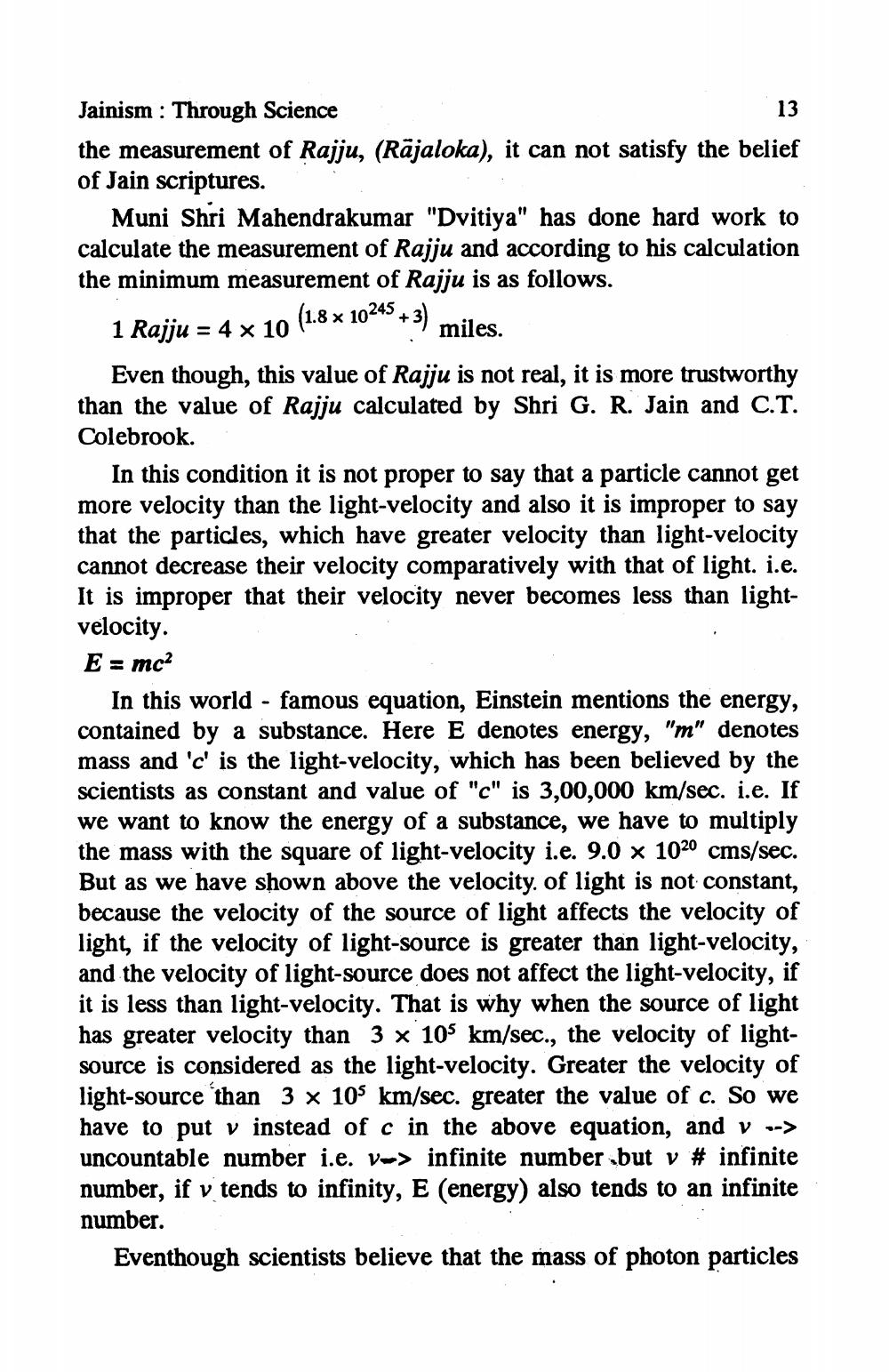________________
les.
Jainism : Through Science
13 the measurement of Rajju, (Rājaloka), it can not satisfy the belief of Jain scriptures.
Muni Shri Mahendrakumar "Dvitiya" has done hard work to calculate the measurement of Rajju and according to his calculation the minimum measurement of Rajju is as follows.
1 Rajju = 4 x 10 (1.8 x 10245 +3) miles
Even though, this value of Rajju is not real, it is more trustworthy than the value of Rajju calculated by Shri G. R. Jain and C.T. Colebrook.
In this condition it is not proper to say that a particle cannot get more velocity than the light-velocity and also it is improper to say that the particles, which have greater velocity than light-velocity cannot decrease their velocity comparatively with that of light. i.e. It is improper that their velocity never becomes less than lightvelocity. E = mc2
In this world - famous equation, Einstein mentions the energy, contained by a substance. Here E denotes energy, "m" denotes mass and 'd' is the light-velocity, which has been believed by the scientists as constant and value of "c" is 3,00,000 km/sec. i.e. If we want to know the energy of a substance, we have to multiply the mass with the square of light-velocity i.e. 9.0 x 1020 cms/sec. But as we have shown above the velocity of light is not constant, because the velocity of the source of light affects the velocity of light, if the velocity of light-source is greater than light-velocity, and the velocity of light-source does not affect the light-velocity, if it is less than light-velocity. That is why when the source of light has greater velocity than 3 x 105 km/sec., the velocity of lightsource is considered as the light-velocity. Greater the velocity of light-source than 3 x 105 km/sec. greater the value of c. So we have to put v instead of c in the above equation, and v --> uncountable number i.e. V-> infinite number but v # infinite number, if v tends to infinity, E (energy) also tends to an infinite number.
Eventhough scientists believe that the mass of photon particles




